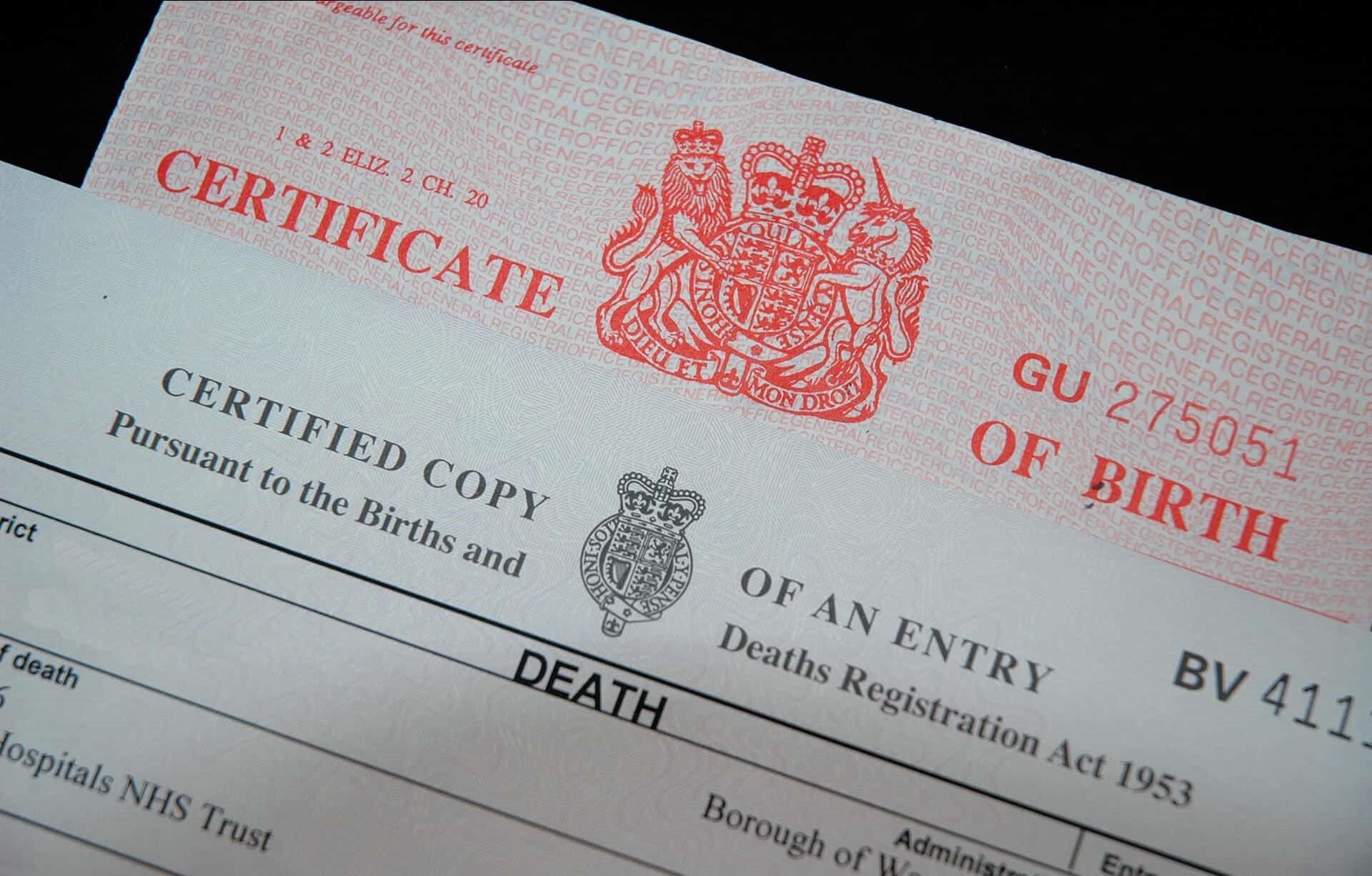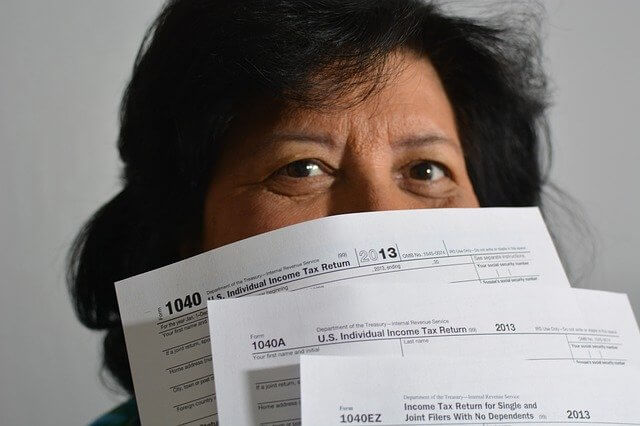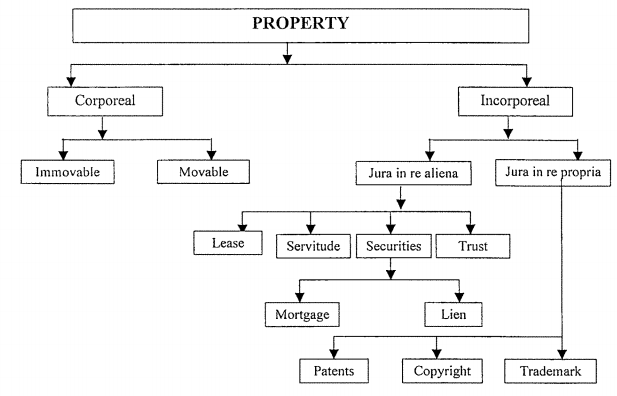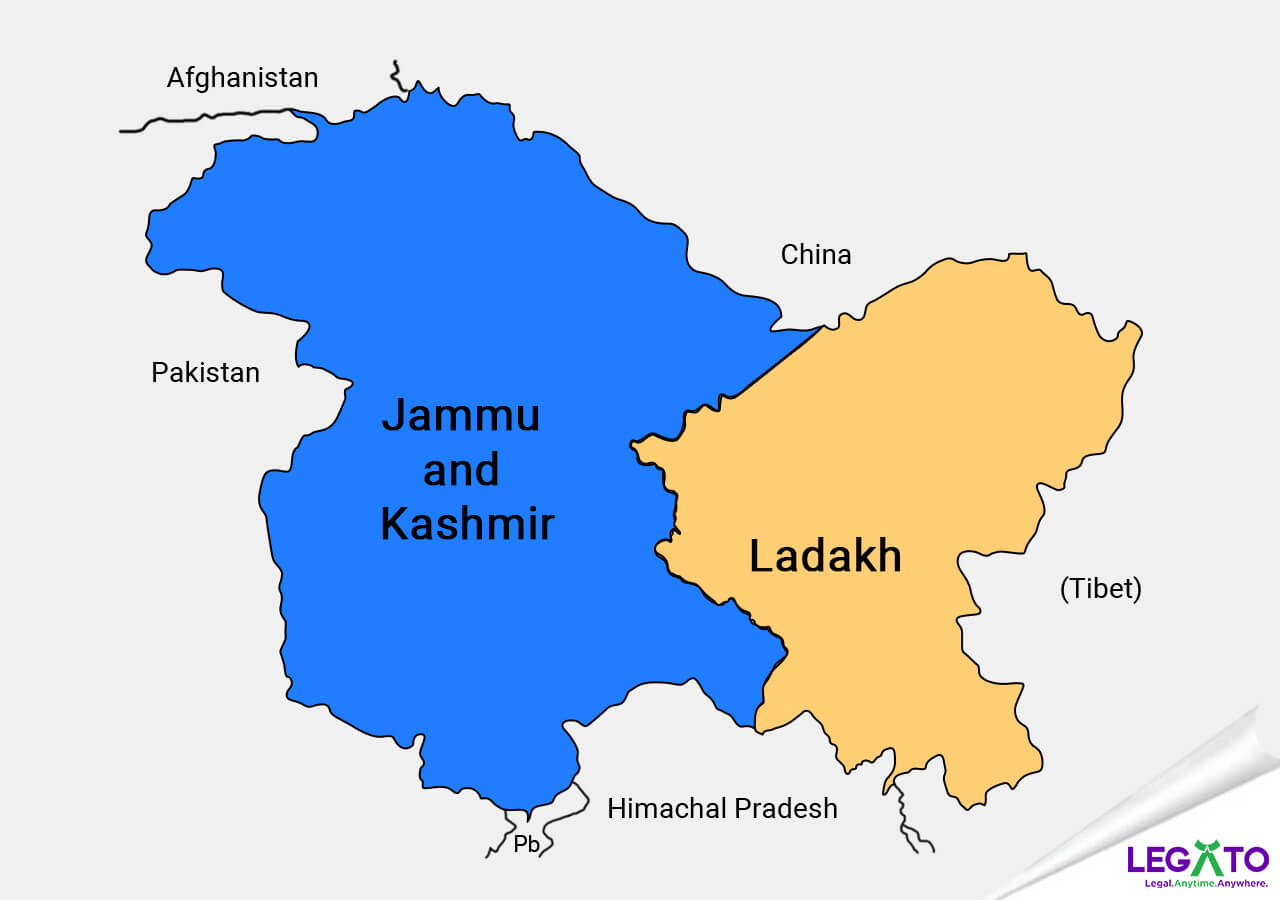Intellectual Property: Registration and Effects
by: Adv. Kishan Dutt Kalaskar 2023-03-30 16:34:46

by: Adv. Kishan Dutt Kalaskar 2023-03-30 16:34:46

by: Adv. Kishan Dutt Kalaskar 2023-03-30 16:20:33

by: Adv. Kishan Dutt Kalaskar 2023-02-28 18:47:16

by: Adv. Kishan Dutt Kalaskar 2023-02-28 18:10:41

by: Adv. Kishan Dutt Kalaskar 2023-02-03 22:32:13

by: Admin 2023-02-01 16:45:35

Intellectual Property: Registration and Effects

Clearance to get a Passport and Visa during the pendency of Criminal Cases

Summary of the Payment and Settlement System Act, 2007

Procedure to track court cases online

Key Features of Union Budget 2023

Top 10 reasons to hire a Civil Lawyer

5 Benefits Of Hiring A Business Lawyer When Starting Your Company

Top 5 Reasons Why You Should Consult A Banking Lawyer

10 Things to Consider Before Hiring an Accident Lawyer

Payment Recovery Process

Analyzing legal and security issues in cyber contracts (E - contracts)

Discharging and Quashing in Criminal Cases

Legal compliances for online shopping sites in India

How to select a Lawyer

Supreme Court Judgments 2022

Maternity Benefit Act 1961, at a Glance

Modes of Recording Accepted by Court

Essential elements of a sale under the Transfer of Property Act

Compensation in Motor Vehicle Accident Cases

Is it important to respond to a summon?

Analysis of Section 18 of Limitation Act, 1963

Fresh period of Limitation

The breakdown of the doctrine of Res-Judicat

Impact Of Supreme Court Ruling

Analysis of Employees Provident Fund and Miscellaneous Provisions Act

How is 'BLACK MAGIC' governed in India

Different Identities of an NDA

Breaking down the requirements of becoming a Public Prosecutor in India.

Mohan Breweries & Distilleries V/s Commercial Tax officer, Madras

Kavita Kanwar Vs. Mrs Pamela Mehta & Ors

Entry into Judiciary: Minimum required Qualifications

Law of Retrenchment

Grounds for refusal of a Trademark Application

Early disposal of pending cases by the High Court

Parminder Kaur V/s State of Punjab

Central Bank of India V/s M/S Maruti Acetylene Co. Ltd.

Goan Real Estate and Construction Ltd. And Anr. V/s Union of India

Raj Kumar V/s Ajay Kumar

Synopsis of the Special Marriage Act in India

Lok Adalat has no jurisdiction to decide a matter on Merits

Significance of a Police Clearance Certificate in a pending Accident Case

Understanding the Digital Rupee

Eligibility of Teachers for Gratuity under the Payment of Gratuity Act, 1972

Dr. M. Kocher V/s Ispita Seal

Smt. Seema Kumar V/s Ashwin Kumar

Leo Francis Xaviour V/s The Principal, Karunya Institute

Nazir Mohamed V/s J. Kamala and Ors.

Addissery Raghavan V/s Cheruvalath Krishnadasan

Himalaya House Co. Ltd. Bombay V/s Chief Controlling Revenue

K. Sivaram V/s P. Satishkmar

Basir Ahmed Sisodia V/s The Income Tax Officer

Burden of Proof

Interest for delayed Payment under Payment of Gratuity Act, 1972 - Need for Change?

How to file a complaint in regards to violation of Cyber Laws

Delayed Justice from Consumer Courts

Can a registered Will be challenged in the Indian Court?

Trademark Infringement - Triple identity test in Trademark

Blockchain Technology in India – II

Manish V/s Nidhi Kakkar

Withdrawal of Mutual Divorce Proceedings

Blockchain Technology in India - I

Unnatural Offences

Surendra Kumar Bhilawe V/s The New India Assurance Company

Seat Vs Venue of Arbitration

D. Velusamy V/s D. Patchaimmal

Standard from of Contract - Legal or Illegal?

Life Insurance Corporation of India V/s Mukesh Poonamchand Shah

MSME Debt Recovery Provisions

Neelam Gupta Vs Mahipal Sharan Gupta

Analysis of Section 11A of Industrial Dispute Act, 1947.

Time Limits & Procedure to approach HC in Civil Cases

The necessity of Gender-Neutral laws in India

Sou. Sandhya Manoj Wankhade V/s Manoj Bhimrao Wankhade

Plea of Adjustment

Filing of Complaints against biased Judges

G. Raj Mallaih and Anr. V/s State of Andhra Pradesh

Zee Entertainment Enterprise Ltd. V/s Suresh Production

Chief Administrator of Huda &Anr. v/s Shakuntala Devi

Permanent Child Custody

Dilution of the statutory protection available to MSMEs

Validity of an Unregistered Sale Agreement

Ambalal Sarabhai Enterprise v/s Ks Infraspace LLP

False and misleading advertisements in India

National Legal Service Authority v/s Union of India and Others

Recovery Procedure in Cheque Bounce Cases

Roxann Sharma V/s Arun Sharma

Ganesh Santa Ram Sirur V/s State Bank of India &Anr.

Recovery Procedure of Consumer Court Cases

Bank Guarantee

M/s M.M.T.C Ltd. & Anr v/s M/s Medchl Chemical & Pharma P

Shailendra Swarup V/s Enforcement Directorate, The Deputy

SunitaTokas v/s New India Insurance Ltd.

Can couples get separated without a divorce?

Scope of Arbitration in India

Appointment of Arbitrators

NRIs right to purchase Property in India

Decriminalization of Dishonour of Cheques: a measure contradictory to its purpose

Paternity leave in India

Regulation of Cryptocurrency in India

How can litigants list their cases online?

Validity of Narco-Analysis in India

Remedies against frivolous cases registered against students by the Police

Procedures involved in a Criminal Trial

Procedured Involved in a Family Court Case

Death Certificate of a missing Person

Accountability of Police

Highlight of important Dishonour of Cheque case laws in 2020

Guidelines to be followed by Registered Medical Practitioners to dispense medicines

Land Mark Judgements on Family Law for the Year 2020

Remedies against harassment by Recovery Agents

Abetment to Suicide

Overview of the Vehicle Scrappage Policy

Rights of husbands in dowry and cruelty-based complaints

Admissibility of E-evidence; Are WhatsApp chats and E-mails admissible in Court?

Triloki Nath Singh V/s Anirudh Singh

Milmet Oftho & Ors. V/s Allergan Inc.

Director of Income Tax II (International Taxation) V/s M/s Samsung Heavy Industries Co. Ltd.

M/s ExL Careers V/s Frankfinn Aviation Services Pvt. Ltd.

The Maharashtra State Cooperative Bank Ltd V/s Babulal Lade & Ors.

Constitutionality of Bandhs

State of Himachal Pradesh V/s A parent of a student of a Medical College & Ors.

Rathnamma & Ors. V/s Sujathamma & Ors.

Ravinder Kaur Grewal V/s Manjit Kaur

Ficus Pax Pvt. Ltd. V/s Union of Indian & Ors.

Commissioner of Income Tax V/s Chandra Sekhar

Analysis of Section 41-A of CRPC, 1973

Judgment: Indian Bank V/s Abs Marine Product Pvt. Ltd.

Kailas & Ors. V/s State of Maharashtra

Sukhedu Das Vs Rita Mukherjee

Witness to a Will

National Insurance Co. Ltd V/s Hindustan Safety Glass Works

Mahalakshmi V/s Bala Venkatram (d) through LR & Anr.

Kajal V/s Jagdish Chand

Shyamal Kumar V/s Sushil Kumar Agarwal

NRI's Power of Attorney

Megha Khandelwal V/s Rajat Khandelwal and Ors.

Is Registration Compulsory under Trademark and Copyright?

Md. Eqbal & Anrs. V/s State of Jharkhand

Types of Will

Employment Contract

Police Clearance Certificate

Validity of Crypto-Currency in India

A. Jayachandra V/s Aneelkaur

Points to be considered before filing an Income Tax Return

Union of India V/s N. K. Shrivasta

Startup under the Government Programme

The procedure for filing a complaint against a Lawyer

Types of Stamp Paper

Satvinder Singh V/s State of Bihar

Sexual Violence laws under the Indian Penal Code

Shreya Singhal V/s Union of India

Division of Assets

Shaleen Kabra V/s Shiwani Kabra

Types of Property

Vasant Kumar V/s Vijaykumari

Personal Injury - Damages

Adultery under the Indian Law

United Commercial Bank & Anr. V/s Deepak Debbarma & others

Intentional Wrongs

Vinay Kumar Mittal & Others V/s Deewan Housing Financial Corporation Limited

How to get a Marriage Certificate?

Mohammed Siddique Vs National Insurance Company Ltd

Pagdi System

The Bonus Act

Frivolous Complaints under the Sexual Harassment Act

Important Income Tax Return Forms and its Due Dates

Garden Leave

How can a Private Complaint be filed?

Key changes to Indian Tax Regulations

Employees Provident Fund

Status of Triple Talaq

Contract Farming & the new ordinances that affect the Farmers

Documents required for filing a Divorce

Section 138, 141 and 142 of the Negotiable Instrument Act 1881

Validity and Enforceability of Click-wrap Agreements

Child Custody under Christian and Parsi Law

Hindu Succession Act

Oppression and Mismanagement

Fraudulent and Invalid Contracts

Developments in Reserve Bank of India

Loan Frauds in India

Penalties associated with Driving

Laws governing a Knife

Medical Negligence and its Compensation

Interim Maintenance under the Domestic Violence Act

Shortcomings of the Consumer Protection Act, 2019

Tougher rules for the E-Commerce Industry

Difficulties faced by men in Family Courts

The consumer is the King in 2020

Illegal Termination of an Employee during Covid-19.

Child Labour Laws in times of Covid-19

Real Estate scenario Post Covid-19

Post Covid-19 Digital Shift of Legal practise

Mutual Consent Divorce through Video Conferencing

59 Chinese Apps banned in India

Litigants and the Lockdown - A Court Perspective

Anticipatory Bail for cases under section 498A of IPC

Brand Protection in times of Covid-19

Title Verification of Immovable Property

The Judiciary during the Pandemic

Termination of an Employee during Covid-19

Drafting of a Will

Criminal Medical Negligence in times of Covid-19

How does Covid-19 affect employers and employees?

Rent deference during the Pandemic

Post Covid-19 digital shift of legal practise

Police Interrogation

Prenuptial Agreements

Void and Voidable Contracts

The Negotiable Instrument Act 1881

Cheque Bounce Notice

Types of Dishonour of Cheques

Intestate Succession

The Stand of Essential Commodities

Trademark Cease and Desist Notice

IT Department Notice

Eviction of a Tenant

Consumer Complaint Legal Notice

Medical Adherence to Environmental Laws

Basic Elements of Transfer of Property Act, 1882

Debt Recovery Notice

Cheque Bounce Notice

Hygiene maintenance in Hospitals and Clinics

Consequences of using a Fake Degree/Certificate

Healthcare Security

Rights of Doctors with respect to Medical Negligence

Importance of Consent

Faulty Machine Aids Medical Negligence

The Special Marriage Act, 1954

Top 2019 judgements by Supreme Court

National Medical Commission Act 2019

Money Laundering

Hindu Undivided Family (HUF)

Child Labour

Endorsement under Negotiable Instrument Act

Quashing of an FIR

Annulment of Marriage

Probate

FAQ's on Trademark

EMI - Equated Monthly Installments

Legal mistakes made by the Start-Up

What is a Stamp Paper?

Sexual Abuse in Shelter Homes

Debt Recovery provisions under the SARFAESI Act

Effective ways to stop Ragging

Transfer of Property Act

Personal Injury Lawyers

Marriage Registration under the Special Marriage Act

Rights of Tenant

Classification of various Collar Jobs

Documents to be submitted for ITR Filing

Illegal Immigrants

Role of lawyers in Corporate Finance

Intestate Succession

Employment of White Collar Employment of White Collar

Domestic Violence

Power of Attorney

Dissolution of Marriage - Christian

Noting And Protest

Hostile Witness

Unfair Trade Practice

All you need to know: Drafting a Legal Notice

Fraudulent and unauthorized transactions at ATM

Is legal documentation important in medical practice?

Why do doctors need to be updated with medical negligence laws?

Personal Data Protection Bill, 2019

Jurisdiction of Consumer Redressal Forums

Does telephonic consultations amount to culpable negligence?

Consumer dispute Redressal Forum in dealing with Medical Negligence

Validity of Notices.

Response to a Legal Notice

Promotion of Medical Products.

Doctors' Bill: Prohibition of Violence & Damage to Property Bill, 2019.

Why less Indemnity cover is risky for Doctors?

Procedure for filing a Notice in India

Format of Legal Notices in India

Citizenship Amendment Act, 2019

Demerger

Legal framework for the Elimination of violence against Women in India

International Day for the Elimination of violence against Women

Family Courts in India

Inheritance Law in India

Rights of Children in India

Virtual Clinic

New Medical Technologies in India

Land Records & Titles

Regulations for firecrackers during Diwali

Legal and Regulatory Regime: Medical Technology

Intellectual Property in Medicine

Consumer Protection Bill, 2019

Artificial Intelligence in healthcare

The Real Estate (Regulation & Development) Act

Warrant and its Types

Joint Custody of Child in India

Limited Liability Partnership (LLP)

Penal Provision on Rash and Negligent Driving

National Company Law Tribunal

Rules to be followed by the Ganpati Mandals

Need to amend CrPC and IPC to increase the conviction rate.

Motor Vehicle Amendment Act, 2019

The Growth of technology Patents in India

Citizenship under the Indian Constitution

Basic Structure of the Indian Constitution

A comparative study of the Indian, UK and the US Constitution

Can the Indian Constitution be Amended?

Overview of the Indian Constitution

All you need to know: Drafting a Legal Notice

Surrogacy (Regulation) Bill, 2019

Overview of The Indian Penal Code

Offences and Prosecution under the Income Tax Act, 1961

The abolishment of Article 370 of the Constitution: One Nation One Flag

Intervention of SC in the Unnao Rape Case

Case of abandoned NRI brides, Supreme Court issues notice to the State

Financial Risk Management

Know more about Equal Remuneration Act, 1976

Procedure to File Complain against Domestic Violence

The IndiGo Promotors Feud

Rajya Sabha passes the Triple Talaq Bill

Gift Deed

More about Contested Divorce

Things to be kept in mind - Dishonor of Cheque

Prison Reforms in India

Consumer Protection ACT, 1986

More about Joint Venture

Delay of Condonation

Points to be Noted for Child Custody to Father

Basic information of Companies

Plastic Money and their Advantage & Disadvantages

Motor Accident Claim Tribunal

Guidelines to protect doctors from frivolous and unjust prosecution

Unjust Compensation - A Doctors Perspective

Misdiagnosis: A Medical Negligence?

Exemption of doctors operating in Emergency Rooms

General Types of Medico-Legal Cases (MLC)

Duty of patient to avoid aiding Medical Negligence

Rights of the Patient

Steps to be taken to avoid Medical Negligence

Liability of Medical Negligence under Consumer Protection Act

Laws that affect Medical Professionals in India

Defense against Medical Negligence Cases

Duties of Doctors

Common types of Medical Negligence

Medical Consent for treatment in India

Regulation for E - Pharmacy in India

Types of Consent for Medical Treatment

Guidelines for Autopsy/ Postmortem in India

Guidelines for the prescription of medicines

Procedure to start a Pharmacy Store in India

India Vs Pakistan: Kulbhushan Jadhav's Case

Contempt of Court

Juvenile Justice Act, 2000

Bankruptcy & Insolvency in India

The Maternity Benefit Act, 1961

Guardian and Ward Act In India

Medical Negligence in India

Procedure to be followed in Civil Recovery Proceedings

Rights of Consumers

Mandatory Registration of Documents and procedure

Rafale Deal And All About The Controversy

Under Article 21 of the Indian Constitution, the right to life has been offered a principal status by the judiciary. Article 21 and 22 ensure against arbitrary detainment and arrest and the legal judiciary now. In a few cases, it has defended this interest and restricted the leader's power to make pointless arrest and confinement. Police have been charged over and over for making an unlawful arrest with no justification, and because of this, an average person, particularly from lower strata of society, needs to suffer a greater amount of this since he/she doesn't know about the law at the hour of arrest and the subsequent reason being that he/she can't draw in an Attorney soon the arrest is made, due to which the Police utilizing their capacity, abuse individuals under their authority and gets away with it without any problem. This Article attempts to analyze Section 41A of the Code of Criminal Procedure, 1973.
What Is Section 41a of Cr. P.C.?
As per Section 41 A of the Code of Criminal Procedure (hereinafter, 'Cr. P.C.'), if any police officer requires the participation of any individual who is not required to be fundamentally arrested under Section 41(1) of Cr.P.C. or against whom a reasonable complaint has been made, or credible information has been received, or a reasonable suspicion exists that he has committed a cognizable offence," the official can give a notice for the equivalent. The individual to whom the Notice is served is obliged to show up at the specified place and time. The individual confirming to the Notice will not be arrested except if in any case considered fit by the Police for which the official is duty-bound to record reasons in writing. Inability to consent to the Notice is a ground for arrest.
History of The 'Notice Of Appearance'
Section 41A was added by the Code of Criminal Procedure (Amendment) Act, 2008 (5 of 2009). However, recently after the enactment of this Amendment, representations were received by the Union Government. Thus, some specific amendments were brought in by the Code of Criminal Procedure (Amendment) Act, 2010 (41 of 2010).
The earlier sub-section (1) of Section 41A read: "The police officer may, in all cases where the arrest of a person is not required under the provisions of sub-section (1) of section 41, issue a notice directing the person against whom a reasonable complaint has been made, or credible information has been received, or a reasonable suspicion exists that he has committed a cognizable offence, to appear before him or at such other place as may be specified in the notice."
The 2010 amendment ensured that a police officer issues such Notice by substituting 'shall' in place of 'may' vide section 3(a) of the 2010 amendment Act. The Amendment also enacted a proviso to section 41(1)(b)(ii) providing for recording of reasons for not arresting an accused. However, the Supreme Court directed in Arnesh Kumar case that issuing a notice of appearance under Section 41A was thoughtfully implemented. The Supreme Court held that their endeavour in this judgment is to ensure that a police officer does not arrest any accused unnecessarily, and the Magistrate does not authorize detention casually and mechanically. To confirm what the Top Court observed above, it gave the following direction:
(1) All the State Governments instruct its police officers not to automatically arrest when a case under Section 498-A of the I.P.C. is registered but to satisfy themselves about the necessary details before that arrest under the parameters laid down above flowing from Section 41 of Cr. P.C.;
(2) All police officers must be given a checklist that contains specified sub-clauses under Section 41(1)(b)(ii) of Cr.P.C.;
(3) The police officer should forward the checklist duly filed and produce the reasons and materials which necessitated the arrest while taking the accused before the Magistrate for his further detention;
(4) The Magistrate while authorizing detention of the accused shall pursue the report produced by the police officer in terms aforesaid and only after recording their satisfaction, the Magistrate will authorize detention;
(5) The decision of not arresting an accused, must be forwarded to the Magistrate within two weeks from the date of the institution of the case with Police to the Magistrate which may be extended further by the Superintendent of Police of the district for the reasons to be recorded in writing;
(6) The Notice of appearance in terms of Section 41A of Cr. P.C. must be served on the accused within two weeks from the date of institution of the case, which may further be extended by the Superintendent of Police of the District for the reasons to be recorded in writing;
(7) A failure to comply with the directions aforesaid shall apart from rendering the police officers concerned liable for their departmental action; shall also be held liable for contempt of court, which is to be instituted before High Court having territorial jurisdiction.
(8) Authorizing detention without recording reasons as aforesaid by the judicial Magistrate concerned shall be liable for their departmental action by the High Court having territorial jurisdiction.
Finally, the Supreme Court added that the directions as mentioned earlier do not apply to the cases that fall under Section 498-A of the I.P.C. or Section 4 of the Dowry Prohibition Act, the matter in hand, but also such instances in which the offence is punishable with imprisonment for a term not less than seven years, or which may extend to seven years; either with fine or without fine.
In Arnesh Kumar's case, the directions laid down are a statutory set of instructions to avoid unnecessary arrest. However, in this case, the safeguards deal with the incident of arrest and the power of arrest itself is not curtailed thereby.
In the case of Amandeep Singh Johar vs State of N.C.T. of Delhi and Anr., the Delhi High Court has laid down a model format for issuance of Notice under section 41A of the Cr.P.C., containing a warning at the end of the model notice format which states that the failure to comply with the terms of this Notice, can render a person liable for arrest under Section 41A (3) and (4) of Cr. P.C.
Sub-section 3 of Section 41A contains a broader premise for arresting even though an accused appears before the investigating officer responds to the Notice of appearance. The said sub-section reads, "where such person complies and continues to comply with the notice, he shall not be arrested in respect of the offence referred to in the notice unless, for reasons to be recorded, the police officer believes that he ought to be arrested."
Difficulties underlying Section 41-A
Section 41 A orders Notice's issuance to the blamed where the arrest for the individual isn't needed according to Section 41(1). Nonetheless, two peculiarities surface up; firstly, the authoritative content of Section 41(1) itself offers discretion to the Police in issues of arrest, as is obvious from the utilization of the word 'may' in the provision. Henceforth, it is open for the Police to decide whether a specific issue falls inside the ambit of Section 41(1) or 41A. Along these lines, the provision which was consolidated to restrict the power of arrest vested to Police under 41(1) has left it upon the Police himself to choose the relevance of the equivalent. Hence, if the Police consider the issue to be good for arrest under Section 41(1), he can at present do as such without any respect to the provisions of Section 41A.
Also, the utilization of subjective terms in the provision, for example, "reasonable complaint", "credible information'', "reasonable suspicion" open space for maltreatment of such powers and leaving tremendous degree for the Police to practice their prudence. Further, 41A (3) furnishes the Police with an occasion to arrest an individual even after confirming with the Notice if the Police believes that the arrest is vital. Additionally, the quick attentiveness to choose consistency with the Notice is vested in the Police. This provision especially builds the Police's ambit to arrest without a warrant – extending it to violations that don't fall under the limits of Section 41(1). The current peculiarities have not controlled themselves to administrative provisions, there have been various cases where abuse of the force vested under Section 41A has been affirmed or demonstrated.
In Tanuja Roy v. State of Assam and Ors., an F.I.R. under Section 420 and 406 being held up against the accused, three police officers from the Dispur Police Station powerfully took the Petitioner to the police headquarters at 1:00 am regardless of opposition from the candidate. She was confined discretionarily, for extended periods without being given any explanation, after which Notice was served to her under Section 41A. The game-plan received by the Police in the current case was uncalled-for. The Court descended intensely upon the Police Officials while holding their activities to be in contradiction of Section 46(4) of the Cr. P.C. Furthermore, not following what Section 41A specifies to deter the force under Section 41A of Cr.P.C., the investigating officer may control the F.I.R. Although the control of F.I.R. was not demonstrated in the moment case, such action isn't altogether uncommon.
Analysis
According to Section 41- A of the Cr.P.C., on the off chance that Police feels that arrest isn't of need, at that point it would be legitimately judicious to give a notice which coordinates an individual against whom a sensible protest has been made and wherein a sensible doubt keeps on continuing, guiding the blamed being referred to show up before the official or at any place determined by Notice. It is the lawful obligation of the individual against whom the Notice has been coordinated to follow the Notice, and as long as he keeps on conforming to the states of the Notice, he will not be arrested, and wherein he neglects to do as such, he is subject to be detained relying on requests passed by a Competent Court.
The Police's optional power is practically limitless as they have limitless powers, particularly upon the perspective on the sub-section (3) of Section 41A which records that the Police can make arrests notwithstanding consistency from the charged. One should address whether this is in rebellion of the administrative aim of the provision.
A line of argument can be created which centres around a potential polarity between arrests made under Section 41 and 41A. Section 41A is summoned simply after; the Police utilizing their tact concludes that arrest of the speculated individual or people isn't needed. This is to state that, the Police have mulled over the entirety of the conditions referenced under Section 41 (1), preceding sending the speculated individual a notice according to Section 41A. Likewise, the High Court of Orissa held that this implies that the cases covered by Section 41(1) have been barred from the domain of Section 41-A. Thus, it is most likely to contend that the idea of arrests under the two sections is unique. This would also imply that the rules and the strategy set up in resulting decisions are made under Section 41 and hence can't be applied to arrests made under Section 41A.
Presently on the off chance that we fathom a circumstance where, the accused's arrest is ordered under Section 41 (1), and the conditions and justification for arrest as determined in Section 41 are satisfied, and still, at the end of the day Section 41A can make a proviso helping the Police. It owns the Police itself to determine if the conditions in Section 41 were met or not to raise a reasonable ground for the utilization of Section 41A. It could offer ascent to occasions where the Police apply Section 41A and send a notice of appearance rather than straightforwardly capturing the individual. The explanations behind such an activity could be various. It may very well be done to dodge strategies set down by Arnesh Kumar concerning arrests made by the Police without a request. The methodology set up is to be followed compulsorily, and Section 41A permits the Police to get away from these techniques and arrest discretionarily. The Section likewise adds a purpose behind the Police to arrest a speculated individual – arrest for rebelliousness with the Notice's conditions and consequently expanding the arrest forces.
Likewise, as the Section offers discretion to the Police, this all-around degenerate police power can manhandle this one case, the Police may require the presence of the blamed individual through Notice, while in a similar case another indistinguishably arranged individual to arrest. Subsequently, there is each probability that the Police will abuse this provision for ulterior reasons.
Another problematic part of the Section is that under the Section the Police can arrange the presumed individual to show up before the official at "such other place as determined in the notice". This would imply that the individual could be arranged to visit any place where the Police would require him and not merely the police headquarters.
Henceforth, note that the Police have abused the provision of Section 41-A. The said Section has exclusively vested its forces upon the Police along these lines, leaving space for it to be misused. The validity of the reports delivered by the Police to feature non-collaboration concerning the charges with exploring organizations or showing that they didn't show up when gathered should likewise be addressed. It isn't past the genuine to expect that a few notices are made after the individual has been arrested in order to show that Notice was given on past dates. The extension for this provision to be authoritative is amazingly huge and that it has been demonstrated that the Police have utilized this provision to badger charged people, as found on account of Amandeep Singh Johar. It was never the aim of the assembly to consider blameless people to be annoyed by the Police, and it is incredibly remembered that while assessing the utilization of the provision of 41-A by the Police.
Presently to handle these rising misbehaviours through a change, the governing body set up a severe method to be followed while the issuance of a notice under Section 41A. In any case, the judgment and the methodology are tricky in their regard. A significant case for the assessment of Section 41-A is that of Amandeep Singh Johar versus the State of N.C.T. of Delhi. For this situation, the applicant advanced that notwithstanding consistency before the specialists, an F.I.R. came to be enrolled against him under Sec 498A and 406 of the I.P.C. He also featured how he was regularly brought to show up before the police headquarters. No composed notification was available in a few occurrences, which is an essential condition under Section 41-A. He affirmed both that the rules of Section 41-A disagreed and that these weren't sufficient to guarantee the security of the individuals called subjects of criminal examinations. The significant rules set somewhere near the Amandeep Singh Johar case included allowing rescheduling of the gathering if it isn't adverse to the Police and sensible. It additionally focused on the significance of consenting to the provisions of Section 41-A concerning the issuance of a notification by the Police.
Notwithstanding, what is additionally noteworthy is that the judgment gave a route to the investigating officer to set down conditions other than those referenced by the Court which essentially must be followed, the disappointment of which would make an individual subject to be arrested as per Section 41-A (3). Ongoing judgments that have referenced the rules have not set up an away from the strategy given in Amandeep judgment; however, have marked the technique to be "rigidly and obligatorily applied".
Conclusion
From the above discussion, because an examining officer having powers under the Cr.P.C can arrest an accused person for the reasons under Section 41 of the Cr.P.C, it isn't important to arrest a charged individual for each situation where a criminal offence is enlisted and is under scrutiny.
A decent measure of discretion must be left with the investigating officer to be reasonable for the public purpose behind the investigation, which is to discover reality on account of criminal offences, which are traditionally treated as offences against the tranquillity of the general public at large. Notwithstanding, this can't be at the expense of fundamental procedural fairness. The off chance that procedure is codified for shielding an accused from pointless arrest and for pre-FIR preliminary inquiry should be interpreted to protect an accused from unnecessary harassment. Subsequently, such a method can't be suggested by any implication to bias a prospective accused or accused individual.
Comment
Share